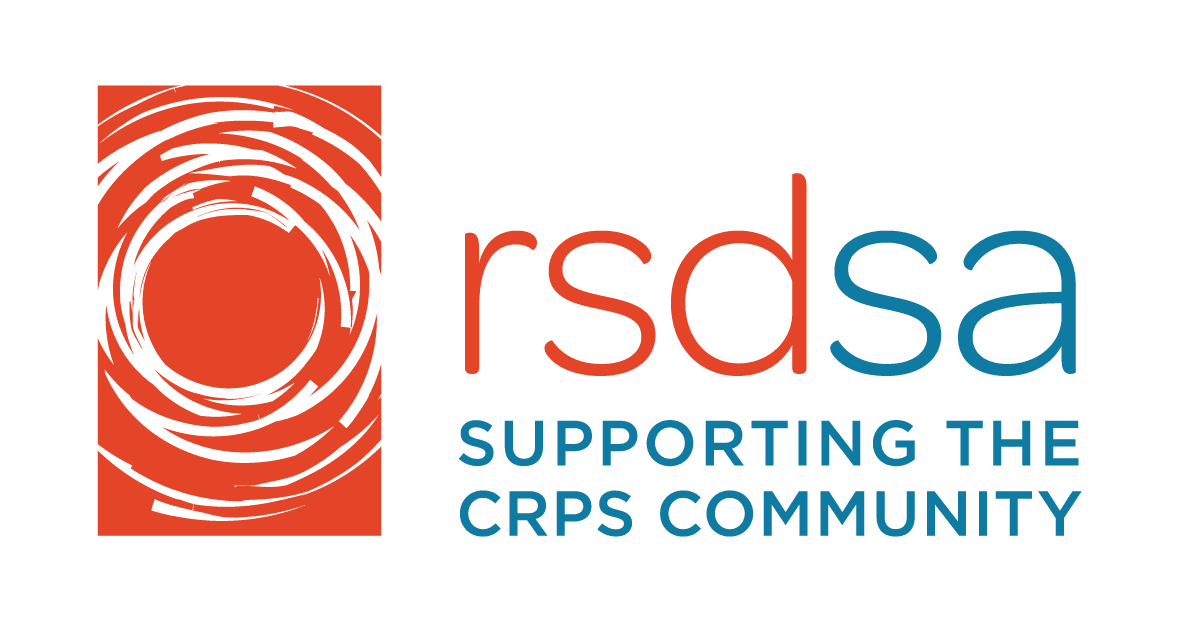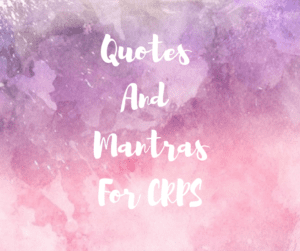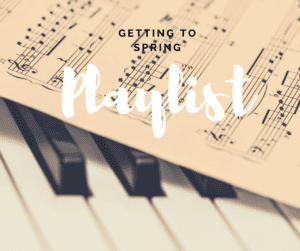 By Dr. David Brady
By Dr. David Brady
This blog was initially titled Complex Regional Pain Syndrome- What Is It And What To Do About It. It was featured on Fibrofix. To learn more about Dr. Brady, you can click here. Here, Dr. Brady writes about what Complex Regional Pain Syndrome is and how to approach it.
Chronic pain affects more individuals than diabetes, cancer, and heart disease combined and yet its origins can be so elusive that an accurate diagnosis of a chronic pain syndrome can be difficult. Determining precisely what you are experiencing and identifying the cause of those specific symptoms is undoubtedly important to unweave the complexity of chronic pain syndromes and find the treatment approach that best addresses your specific condition.
Complex Regional Pain Syndrome
One less common, but severe, chronic pain syndrome that requires early attention is known as complex regional pain syndrome (CRPS). It was formerly called reflex sympathetic dystrophy (RSD), but as research progressed, RSD seemed to only represent a subset of a larger syndrome. This discovery led to the introduction of two new chronic pain syndromes: complex regional pain syndrome type 1 (CRPS 1), formerly known as RSD, and complex regional pain syndrome type 2 (CRPS 2), formerly known as causalgia.1
CRPS Defined
Like most chronic pain syndromes, CRPS is often confused with similar conditions including fibromyalgia and regional pain syndromes. Its central feature is severe, often debilitating pain in one or more limbs. Usually arising from an injury, surgery, and sometimes illness, the pain seems to be out of proportion to the severity of the cause. Occasionally, CRPS develops spontaneously.
The pain receptors of the affected limb are hypersensitive causing immense pain when triggered by a stimulus that doesn’t normally provoke pain such as contact with clothing, bedding, wind, and water. The pain may be described as burning, throbbing, or sharp. The skin temperature of the affected limb may alternate between hot and cold, and temperature hypersensitivity is common. Changes in skin color and texture, and abnormal hair or nail growth are often visible. Sometimes, CRPS is accompanied by bone and muscle abnormalities.
CRPS 1 arises from a generalized illness or injury and represents most CRPS sufferers, while CRPS 2 is linked specifically to nerve injury. It has been suggested that many of the symptoms of CRPS are rooted in inflammation, poor oxygenation of the affected tissue, and abnormalities in the brain, and central and peripheral nervous systems.2
If left untreated, decreased mobility, muscle wasting, and muscle contracture can ensue, making it critical to get a quick and accurate diagnosis, as well as appropriate treatment. CRPS often leads to sleep disturbances and emotional stress, both of which exacerbate the symptoms of CRPS, causing a vicious cycle that leads to poor quality of life. Occasionally, CRPS will resolve spontaneously, but relapses can occur and the symptoms can affect other limbs.
Management of CRPS
Traditional treatment of CRPS focuses on symptom management and is limited to the use of physical therapy, epidural infusions, steroids, non-steroidal anti-inflammatory drugs (NSAIDs), and mild analgesic drugs to relieve pain. Sadly, these options do not seek to address the root causes of heightened pain perception.
As the research of CRPS continues, various ideas regarding the cause of CRPS lead to experimental treatments. For example, in response to the proposal that CRPS may be an autoimmune condition, therapies targeting the immune system have been attempted including intravenous immunoglobulin (antibody) treatment3 and a plasma exchange.4 Spinal cord stimulation is also used to reduce pain, but doesn’t provide long-term relief.5 As with the traditional treatment approaches, these options ignore the complex interaction between all body systems and do not focus on comprehensively supporting the whole body. Therefore, they fall short.
The lack of successful therapies for managing CRPS point to the need for a more comprehensive approach that may be found by taking a step back and considering the underlying biochemical, physiological, environmental, and psychological factors that influence pain perception, inflammation, immunity, and tissue healing. Functional medicine presents a perfect paradigm whereby we can help correct root causes of pain associated with CRPS, rather than focusing on temporarily patching the pain.
Heightened pain perception can be rooted in a malfunctioning neurological system or a structural problem, but it can also arise from chronic inflammation, of which pain is a primary symptom. In fact, multiple studies have shown persistent inflammation associated with CRPS, evidenced by significantly elevated levels of inflammatory factors in the blood, blister fluid of affected limbs, and in the cerebrospinal fluid of CRPS sufferers.6 Chronic pain is often associated with inflammation and points to a confused immune system, which regulates inflammation in the body. Functional medicine focuses on restoring balance to the immune system to reduce inflammation using natural methods such as an anti-inflammatory diet, proteolytic enzymes, omega-3 fatty acids, bioflavonoids, and botanicals that target the inflammatory pathways of the immune system to reduce inflammatory factors.
Pain perception is a function of the brain and nervous system; therefore, a comprehensive and functional approach to managing chronic pain would explore the possibility of anomalies in these organ systems and seek to support them accordingly. Magnetic resonance imaging (MRI) scans of the brains of individuals with CRPS show decreased amounts of gray matter in the areas of the brain and limbic system responsible for pain perception and emotions, similar to findings from other chronic pain syndromes such as fibromyalgia.7 A functional approach to managing these structural anomalies provides dietary and nutraceutical support to help build brain matter while reducing destructive agents (toxins, allergens, etc.) that may hinder healing and function of these organ systems.
Chronic pain syndromes such as CRPS are emotionally challenging and often exacerbated by stress, anxiety, mood disorders, and disturbed sleep. Both emotional and physical trauma influence the development of neurological pathways that are linked to pain perception. Therefore, it is important to address emotional and lifestyle habits that may be reinforcing negative pathways in the brain and enhancing pain perception. A comprehensive and functional approach to reducing pain addresses stress-management, sleep habits, relaxation, and hormone or neurotransmitter imbalances that may affect mood and emotions.
CRPS is one of many chronic pain syndromes that share a host of symptoms stemming from complex functional, biochemical, and/or psychological roots. There is a great need for a comprehensive approach to symptom management – not a drug to cover the pain, but an inside-out approach. This approach will first determine precisely what you are experiencing, identify the cause of those specific symptoms, and then comprehensively support the body’s structural, biochemical, and psychological needs to foster healing. By addressing the root causes of CRPS such as inflammation and structural anomalies with dietary and nutraceutical support, detoxification, stress-management, sleep support and relaxation techniques, the whole body is given the opportunity to heal and quality of life is significantly improved.
So, what steps can you start taking to reduce pain, increase function, and foster healing?
- Begin Consuming an Anti-Inflammatory Diet. This first step will lay down a foundation of health by which all other actions can work more successfully. An anti-inflammatory diet focuses on fresh, unprocessed, whole foods. Avoid packaged, boxed, canned, and prepared food items which contain inflammatory preservatives and additives. Make the bulk of your diet fresh vegetables of various colors. Consume fresh, cold-water fish such as salmon a few times each week. Avoid commercial and processed meats, choosing pastured, grass-fed meats, instead. Use plenty of healthy fats such as olive oil, coconut oil, avocado or hemp oil. Use beans and legumes in place of inflammatory grains, and be sure to drink 6 to 8 glasses of pure water each day, perhaps with added lemon to encourage detoxification.
- Reduce Your Stress Level. Chronic stress initiates inflammation and pain, and yet it so easily intrudes upon our lives. Schedule daily meditation, prayer, deep breathing, and time to “empty your mind” and reflect on positive things in life. Keeping a gratitude journal is a proven way to encourage positive thinking, which is vital for healing. Don’t overcommit and make sure you are setting aside adequate time for supportive relationships. Enjoy nature and take walks outdoors. Both the sounds of nature and smells of essential oils from trees and herbs can help reduce stress. Soaking in a hot, magnesium bath will also encourage rest and relaxation. Adaptogenic or calming botanicals, and nutrients to help reduce stress may include:
- Magnesium, 500-1,000mg per day in divided doses (malate or glycinate form preferred)
- Valerian, passion flower, skullcap, and/or lemon balm, 100-200mg per day each
- Get Adequate Sleep. Sleeping at least 8 hours each night encourages healing and restoration of all organ systems and is required for chronic pain conditions. Restoration best occurs when you sleep between the hours of 10pm and 6am. Unfortunately, most people have trouble falling asleep or staying asleep. Minimizing exposure to blue light from electronics will encourage melatonin production so you can fall asleep. Sleep in a dark room and begin relaxing at least an hour before you retire. If you battle insomnia, try resetting your circadian rhythm with the following:
References:
- Todorova, J., Dantchev, N., & Petrova, G. (2013). Complex Regional Pain Syndrome Acceptance and the Alternative Denominations in the Medical Literature. Medical Principles and Practice, 22(3), 295–300. http://doi.org/10.1159/000343905
- Palmer, G. (2015). Complex regional pain syndrome. Australian Prescriber, 38(3), 82–86. http://doi.org/10.18773/austprescr.2015.029
- Immunoglobulin Treatment for Complex Regional Pain Syndrome. (2017). Annals of Internal Medicine, 167(7). doi:10.7326/p17-9046
- Aradillas et al. (2015). Plasma Exchange Therapy in Patients with Complex Regional Pain Syndrome. Pain Physician, 18(4), 383-94.
- Kriek, N., Groeneweg, J., Stronks, D., & Huygen, F. (2015). Comparison of tonic spinal cord stimulation, high-frequency and burst stimulation in patients with complex regional pain syndrome: a double-blind, randomised placebo controlled trial. BMC Musculoskeletal Disorders, 16, 222. http://doi.org/10.1186/s12891-015-0650-y
- Parkitny, L., McAuley, J. H., Di Pietro, F., Stanton, T. R., O’Connell, N. E., Marinus, J., … Moseley, G. L. (2013). Inflammation in complex regional pain syndrome: A systematic review and meta-analysis. Neurology, 80(1), 106–117. http://doi.org/10.1212/WNL.0b013e31827b1aa1
- Barad, M. J., Ueno, T., Younger, J., Chatterjee, N., & Mackey, S. (2014). Complex Regional Pain Syndrome is associated with structural abnormalities in pain-related regions of the human brain. The Journal of Pain : Official Journal of the American Pain Society, 15(2), 197–203. http://doi.org/10.1016/j.jpain.2013.10.011
Visit Dr. Brady’s Websites FibroFix and Dr. David Brady

 Written by Samantha Anderson for the RSDSA blog
Written by Samantha Anderson for the RSDSA blog Written by Samantha Anderson for the RSDSA blog.
Written by Samantha Anderson for the RSDSA blog.